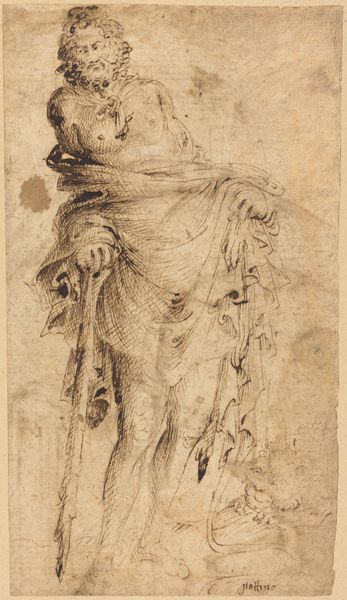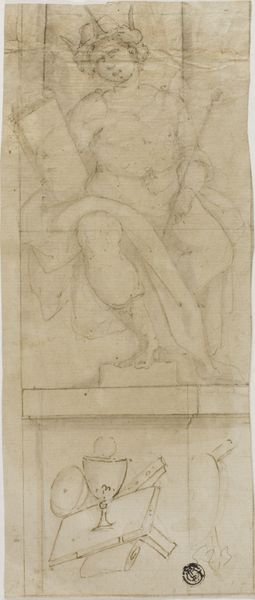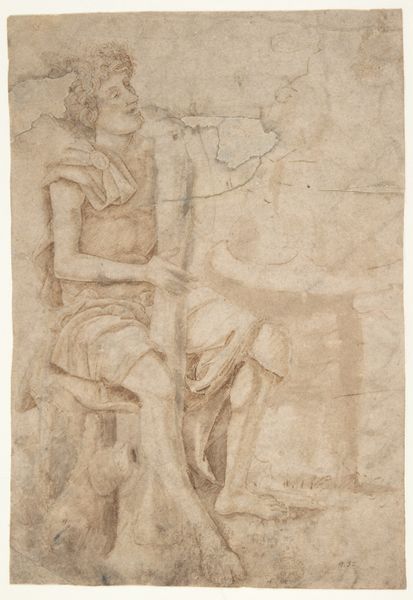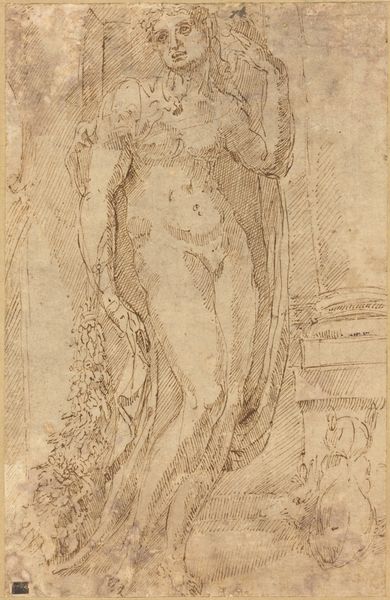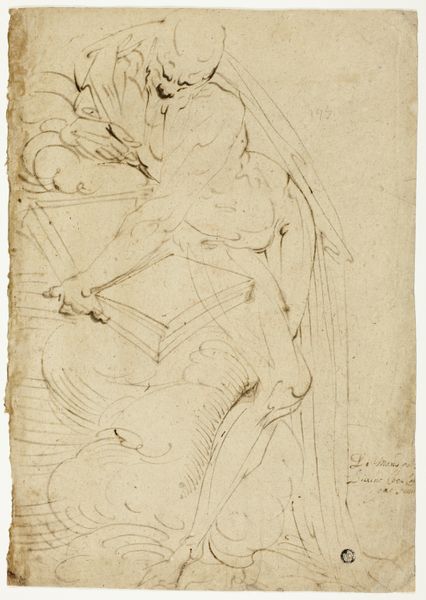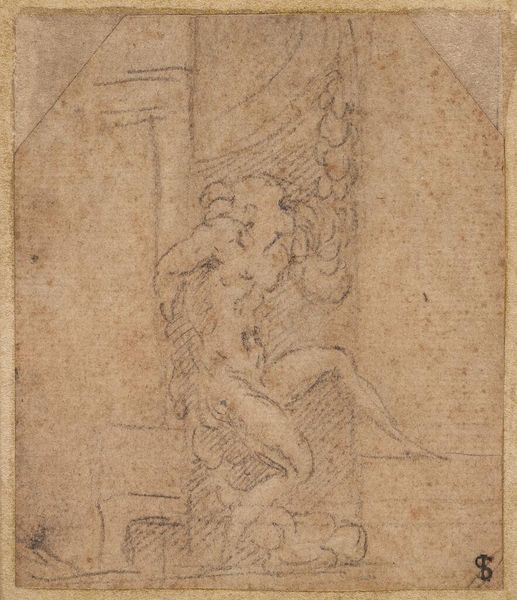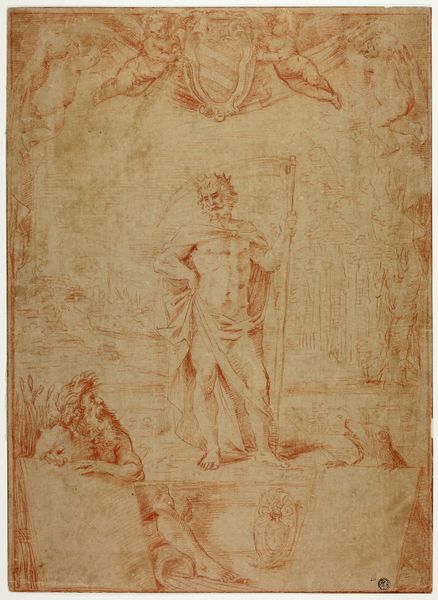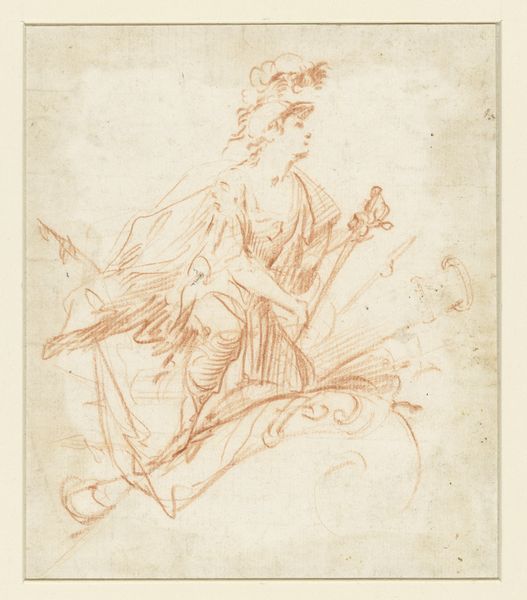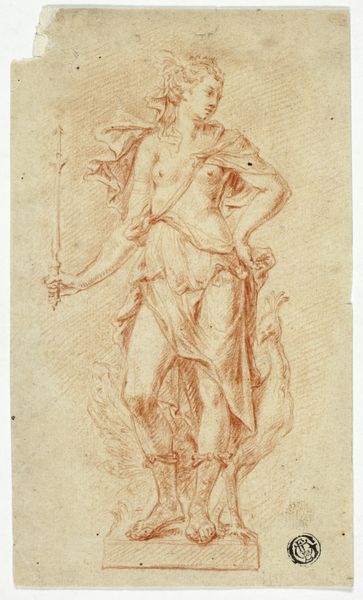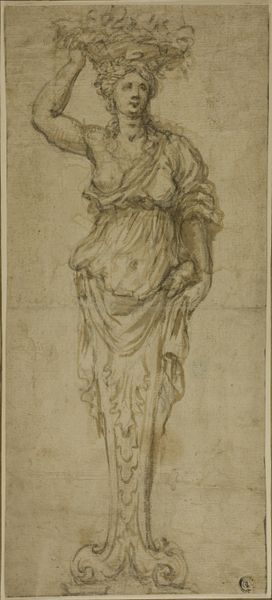
Nøgen Herkules med køllen, set skråt bagfra. Siddende på en ornamenteret kiste med kroppen drejet mod en beskåret figur, der står bag ham 1478 - 1527
0:00
0:00
drawing, paper, ink
#
drawing
#
charcoal drawing
#
figuration
#
paper
#
11_renaissance
#
ink
#
history-painting
#
nude
Dimensions: 119 mm (height) x 68 mm (width) (bladmaal)
Editor: This drawing, “Nøgen Herkules med køllen, set skråt bagfra. Siddende på en ornamenteret kiste med kroppen drejet mod en beskåret figur, der står bag ham,” made with ink on paper between 1478 and 1527 by Marcantonio Raimondi, feels both powerful and a little melancholic. What do you see in this piece? Curator: I see a provocative assertion of the male form set against a backdrop of socio-political and artistic transition. This nude Hercules, rendered with such deliberate detail, demands we consider the intersections of power, masculinity, and representation within the cultural moment that produced it. It challenges us to dismantle conventional understandings and to recognize the male nude not merely as an aesthetic object, but as a potent symbol within historical power structures. Where do you see those power structures reflected? Editor: I hadn't really considered power so explicitly here; I saw mostly a classical ideal. The muscularity, the subject… But you are right; there is a kind of dominance in his posture. Curator: Exactly. And beyond its classical allusion, we must consider how Hercules, as a symbol, can be interrogated through the lens of gender theory. Are we not invited to consider the artist’s—and by extension, society’s—fascination with hyper-masculinity and its complex relationship with vulnerability, here suggested by the rather contemplative pose? The positioning against classical ruins speaks to that contrast and a civilization reckoning with itself. Editor: That really changes how I look at it. I was initially focused on the artistry of the lines and form, but now it's clear that there are narratives of power, gender, and societal transformation embedded in it. Curator: Precisely! It is about acknowledging these often unspoken dialogues that artwork can reveal. Each stroke of ink whispers of the social tapestry of its time, challenging us to listen attentively and interpret critically. It is in these critical discussions that we truly engage with art’s ability to challenge, provoke, and, ultimately, transform our understanding of ourselves and the world we inhabit. Editor: Thanks. Now I understand that looking closely involves asking those challenging questions.
Comments
No comments
Be the first to comment and join the conversation on the ultimate creative platform.
